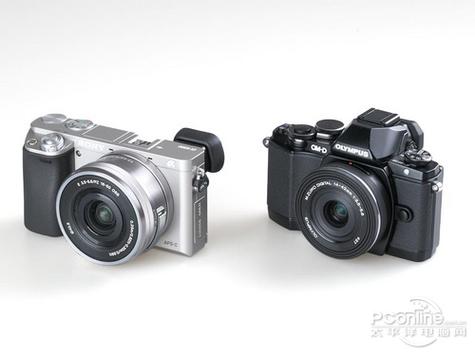Olympus OM-D EM10 vs Sony A6000: A Detailed Comparison
When it comes to choosing a mirrorless camera, the Olympus OM-D EM10 and the Sony A6000 are two popular options that often come up in discussions. Both cameras have their unique strengths and weaknesses, making the decision a tough one. In this article, we will delve into a detailed comparison of these two cameras across various dimensions to help you make an informed decision.
Design and Build Quality
The Olympus OM-D EM10 boasts a classic, retro design with a magnesium alloy body, which gives it a solid and premium feel. It measures 119.2 x 82.3 x 42.4 mm and weighs approximately 383 grams, making it a compact and portable camera. On the other hand, the Sony A6000 has a sleek, modern design with a polycarbonate body. It measures 120.3 x 67.1 x 45.1 mm and weighs around 344 grams, which is also quite compact and lightweight.

In terms of build quality, both cameras are well-crafted and can withstand everyday use. However, the Olympus OM-D EM10 has a slight edge due to its magnesium alloy body, which is more durable than the polycarbonate body of the Sony A6000.
Image Quality
When it comes to image quality, both cameras offer excellent performance. The Olympus OM-D EM10 features a 16.1-megapixel Live MOS sensor and TruePic VII image processor, which deliver sharp, detailed images with rich colors. The Sony A6000, on the other hand, has a 24.3-megapixel Exmor APS-C HD sensor and BIONZ X image processor, which also produce stunning images with excellent detail and color accuracy.
One of the standout features of the Olympus OM-D EM10 is its 5-axis in-body image stabilization, which helps reduce camera shake and produce sharp images even in low light conditions. The Sony A6000 also offers 4-axis image stabilization, which is effective but not as comprehensive as the 5-axis system of the Olympus OM-D EM10.
Performance
In terms of performance, the Olympus OM-D EM10 offers a maximum continuous shooting speed of 8.5 frames per second, while the Sony A6000 can shoot up to 11 frames per second. This means that the Sony A6000 is slightly faster when it comes to capturing fast-moving subjects.

Both cameras have a fast autofocus system, with the Olympus OM-D EM10 using a contrast-detection autofocus system and the Sony A6000 using a phase-detection autofocus system. The phase-detection autofocus system of the Sony A6000 is generally faster and more accurate, especially in low light conditions.
Video Capabilities
When it comes to video capabilities, both cameras offer Full HD recording at 60p, which is excellent for capturing smooth, high-quality video. The Olympus OM-D EM10 has a built-in microphone, while the Sony A6000 offers an external microphone input, which is beneficial for those who want to improve the audio quality of their videos.
Features and Connectivity
The Olympus OM-D EM10 comes with a range of features, including a tilting touchscreen, built-in Wi-Fi, and a hot shoe for attaching accessories. The Sony A6000 also offers a tilting touchscreen, built-in Wi-Fi, and a hot shoe, but it also includes a built-in flash, which the Olympus OM-D EM10 lacks.
In terms of connectivity, both cameras offer built-in Wi-Fi and NFC, allowing you to easily transfer photos and videos to your smartphone or tablet. The Sony A6000 also offers built-in Bluetooth, which is not available on the Olympus OM-D EM10.
Price and Value
When it comes to price, the Olympus OM-D EM10 is generally more affordable than the Sony A6000. This makes it an excellent choice for budget-conscious photographers who are looking for a high-quality camera without breaking the bank.
Both cameras offer great value for their price points, but the Olympus OM-D EM10 may be the better choice for those who are looking for a more budget-friendly option.
In conclusion, both the Olympus OM-D EM10 and the Sony A6000 are excellent mirrorless cameras with their own unique strengths. The Olympus OM-D EM10 is a great choice for those who prioritize image quality, build quality, and affordability, while the Sony A6000 is a great choice for those who want a camera with fast performance, advanced video capabilities, and a modern design.


